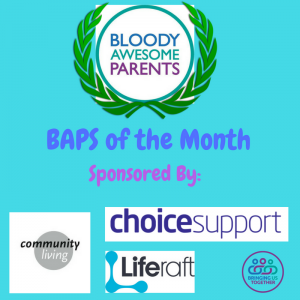Parent Groups – Members
We continue our tips on running a successful parent group. As we have said, we’re not experts but we do know what some of the common issues are and our hope is that by highlighting them, you can take steps to avoid them before they arrive.
So far, we have looked at Values, Communication, Measuring Success, Egos and Leadership.
Members
This week we are looking at Members.
 How do you recruit new members to your group? Recruiting new members often starts quite easily. Your friends join, their friends join but then often there becomes a lull. This is often because parents are not quite sure what you do or what is in it for them?
How do you recruit new members to your group? Recruiting new members often starts quite easily. Your friends join, their friends join but then often there becomes a lull. This is often because parents are not quite sure what you do or what is in it for them?
There are many different ways to recruit, many charities and groups have sign up forms on their site. However, if you are a smaller group without a website, then obviously you need to consider other options. Facebook groups tend to be very popular and next week we will be looking at marketing (including the use of social media). Some groups prefer good old-fashioned leaflets with a sign up form. We have to confess that as a parent, we are more likely to sign up as a member of something if we meet someone from the group at an event. Having sign up forms with you at any event where you know there is a chance to meet potential members is great. Please don’t think these forms have to be printed by professionals or cost a fortune; some of our favourite groups are those who handed us a home-printed form at a coffee morning or event. When you see one of those, you know they really are just parents, like you.
Engaged Members: There is absolutely no sense in having thousands of members if only one or two are engaging with you. If you send out a questionnaire, how many people respond? If you post on Facebook, do you get any people commenting or sharing? Instead of constantly looking for new members, start looking at your current members and how many are actually engaged. We all know parents out there who sign up to every group and every newsletter, just to keep up to date with what you are doing or who are not too comfortable engaging. This does not mean you don’t want them, you do, but maybe you can look at tiers of membership.
What role do your members play? Are they just people who meet for a coffee but have no say in how you run? Do they get to have a say in how you are run?
This is where a tiered membership can be useful. For example, you may have a group of parents who engage in the running of the group, a group of parents who help to promote your group in their area, a group of parents who want to take part in surveys, etc and perhaps another group who just want to receive updates on what is going on.
As parents, we are all beyond busy, so having the option when we sign up about how we engage is really useful. It also helps members to know what their role within the group is. Some people don’t want to sit on board type groups but are happy to feed into surveys, some are happy to do anything to help the group and others are happy to just know what is going on so they can stay up to date.
Many of us don’t want to receive loads of emails that we feel aren’t relevant to us. However, if we know what we are signing up for, we will be more likely to open and respond to an email.
If you define each group, it will help you too. There is nothing worse than sending out a survey to 1000+ members and receiving just a few responses. It can be soul destroying. However, if you have a group of parents who have said “yes please, send me every possible survey” then you know the responses will be higher.
Do you know your members or are they just a name on a list? Again, this is where a tiered membership helps. Knowing who the families are in each group helps immensely. As your relationship develops, you will get to more about them as their trust in you grows. However, there is nothing worse than thinking you are just a name on a list and no personal contact – this is why some of the larger charities have a big drop off from members when the communication from them becomes really impersonal and irrelevant. Ask some questions at sign up time. Age of children, perhaps a few questions about their child’s disability. This can also help you when families ask you for help – you can often find a group member who you know will be able to help but only if you get to know your members.
How do you find a balance between wanting more members and actually meeting the needs of the current members? Look at the feedback you are getting from your current members. If there is a general unhappiness, then ask yourself if there is a reason. We don’t mean when the group is unhappy with changes in legislation or local policy or lack of services, we mean when the feedback about your group is negative. Again, go back to what the group is there for? We discussed this in Values and Communication – is it clear what you offer as a group? If there is some uncertainty, then go back to basics. Define what you do, who you are there for and remind members with a friendly post or newsletter.
How do you deal with issues about a member – perhaps they have bad mouthed you on Facebook or you hear they have been speaking negatively to other parents about your group? Let’s be honest here, this is real life. People will disagree, people will change and people will move on. It’s also worth remembering that we all have good days and bad days and sometimes we hit out at the nearest person. Do you have a plan in place for when this happens? Sometimes, it is not worth doing anything – some people are just never going to like you or trust you and most people know this. However, if the comments are not just someone venting but could be seen as slanderous or have a detrimental effect on the group, then perhaps there are things that need to be done. In our post about Egos, we covered a Code of Conduct for groups. A sort of guide to what is and isn’t acceptable. It may sound really tedious and too official for your small group, but based on experience, we would suggest you consider having one. It takes some pressure off you. If you have to remove someone from a group and their friends choose to tell you how horrible you are for doing this, you can just refer them to the Code of Conduct that everyone is made aware of and you can leave it there. You will get people who want to argue, just because they have a keyboard, so having something you can point to helps you to move on.
Members – Check List
- How do you recruit members? How successful is that for you? Could you offer other options?
- How many members are actively engaged?
- Could you offer a tiered membership?
- What role do your members play in the group?
- Do you know your members – if not, how could you improve on that?
- Do you have a Code of Conduct for members?
- Do you think you are meeting the needs of your members or does your remit need to change?
Next week, we will be looking at Marketing and Social Media, offering some tips on using social media and explaining how marketing can be so important to the growth of your group.
Mum to three great kids, each with a different SEN.
Transplanted from the NW to the SE.
Co-founder and Director of Bringing Us Together







